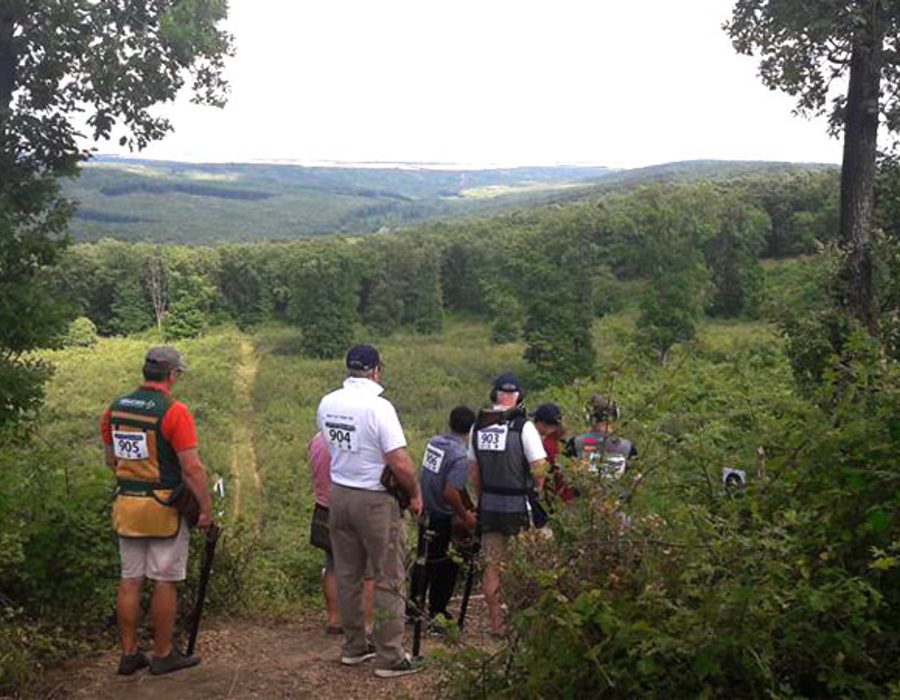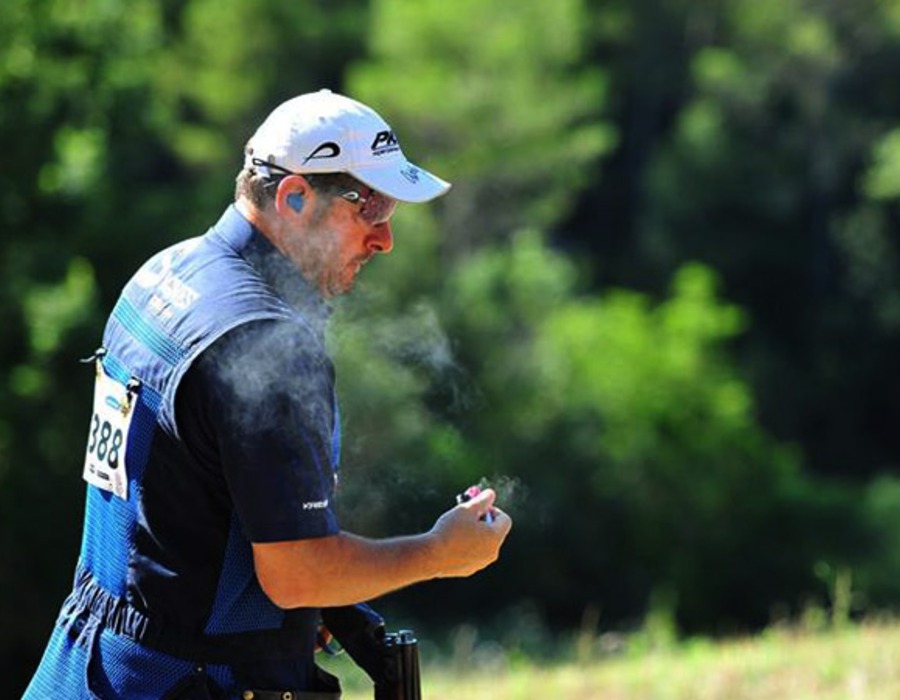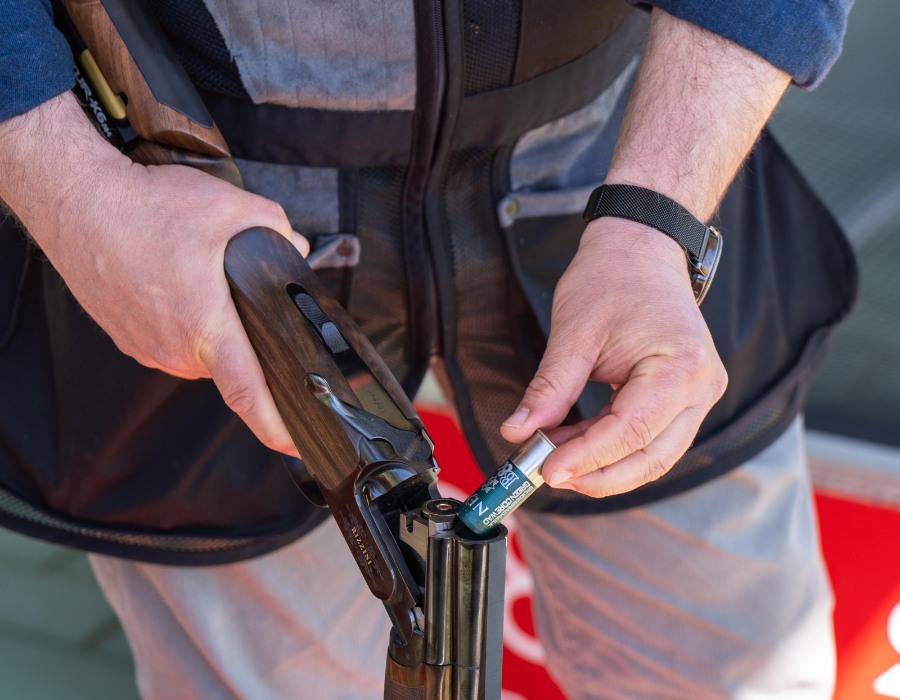Compak Sporting, better known as Sporting Clay, is a clay pigeon shooting specialty in which the trajectory of the clay pigeons very much simulates the flight and running of wild animals.
To practice it in a profitable and satisfactory way, you need a very different shotgun than those used for Trap and the Olympic pit.
The shotgun must be equipped with shorter barrels, 66 cm minimum, with chokes ranging from **** or ***** stars for the first barrel and *** for the second.
In addition, the folds and advances of the stock will have to adapt to the different types of targets being shot.
In all this, choosing the correct ammunition cannot be underestimated since, although not very different from those used for the other disciplines of clay pigeon shooting, it must still be able to do its “job” even at a short/medium distance.

How to choose ammunition for the Sporting Clay
Choosing the right ammunition to practice the Sporting Clay implies a minimum knowledge of ammunition performance and ballistics.
Starting from what is established by the Fitav regulation, it is clear that the ammunition for the Sporting Clay must be 28 grams with lead of no more than 7, and systems that favor the dispersion of lead are not allowed.
Furthermore, considering that the target in the Sporting Clay is engaged between 13 and 20 meters, except for the recovery of the second barrel, it is clear that ammunition with a rather large pattern is needed, especially at the start, and provided with a decent speed so that the lead intercepts the target as quickly as possible.
Since it is not possible to use dispersion systems, a doubt could arise: how can this effect be obtained instead, given the short range of engagement of the target, especially in the first barrel?
To ensure that the “First strike” is successful in the Sporting Clay, three factors must be collimated.
- The first certainly depends on the skill, aim, and experience of the shooter, who has the right amount of time to engage and fire the first shot;
- The second depends on the drilling in the shaft and choking of the first barrel, which will give the ammunition such an effect as to allow the lead, after a short and slightly forced motion in the tube, to widen, undergoing the dispersing effect, once in contact with the air, despite the container wad;
- The third, but not the least, depends on the ammunition that will be used.

The features of the best ammunition
It is believed that to obtain a sufficiently wide and garnished pattern over a short and medium range, it is necessary to focus on two characteristics that the ammunition must possess.
First of all, the ammunition must be loaded with lead with a diameter of less than 7½; being smaller offers less aerodynamic drag. Furthermore, it must be high-speed ammunition, capable of developing speeds at V1 around 415 m/s with pressures above 600 bar.
As a result, it will be able to cause a sort of water hammer in the short and slightly choked barrel capable of disrupting the swarm of shots, obtaining an opening effect of the shot pattern.
For this reason, many ammunition manufacturers offer cartridges loaded with 8½ lead and even 9 with high speed for the Sporting Clay in clay pigeon shooting, and some have even introduced the felt wad to obtain wider shot patterns over short distances.
Once the most appropriate ammunition has been identified for the first barrel, there may be a problem for the second barrel.

The ammunition you should choose for the second barrel
In fact, a possible recovery, the “second strike”, if the first shot went badly, would take place between 25 and 30 meters.
At this point, considering that the second barrel will have a choke of at least *** but still wide, the desired effect for the first barrel would become a limit.
In this way, the useful range of lead would be drastically reduced, producing “cold” and rarefied shot patterns with the slight risk of piercing the target but not breaking it and therefore losing the point.
In this case, for the second barrel to be used in the Sporting Clay, it is necessary to use slightly slower ammunition, with a speed of around 405/410 m/s, able to push the mass of lead farther away without creating violent shocks to the lead, but able to take advantage of the narrower choke to keep the pattern more compact.
Of course, the lead numbering will have to be larger than the first, able to better resist the delay due to friction with the air.

Returning to the classic 7½, for example, you will get shot patterns that after twenty meters will be perfectly garnished and able to target at least those 4.5 pellets still with a good residual speed (at least 160 m/s of the initial 410) and sufficient kinetic energy that, within the range of 30 meters, will be able to break the structure of the target giving the point.
Choosing the best rounds for the Sporting Clay to reduce recoil
The use of the two different types of ammunition in the first and second barrel must still be well evaluated.

In fact, high-speed ammunition, producing high-pressure peaks (between 640 and 660 bar) and being loaded with very lively powders, despite having a fast barrel trip, could give the shotgun a rotation or tipping.
This could lead to distracting the shooter from the line of sight and would result in a considerable waste of time for realignment in recovery in the second barrel. In addition, aggressive ammunition could also cause annoying recoil for those who use them both in competition and training.
For this reason, it is important to choose ammunition that is able, already in its structure (e.g. “Gordon” case), to attenuate the shotgun’s recoil.
In addition, by using shotguns that mount a stock such as the Futur-K6AM, the shotgun will remain even more balanced thanks to the modern cushioning system it possesses. Therefore, there will be a recoil-free effect for the two types of shock absorber, the cartridge and the stock.
The consequent reduction of the recoil effects on the shotgun and shooter will favor concentration and fluidity of movement.
